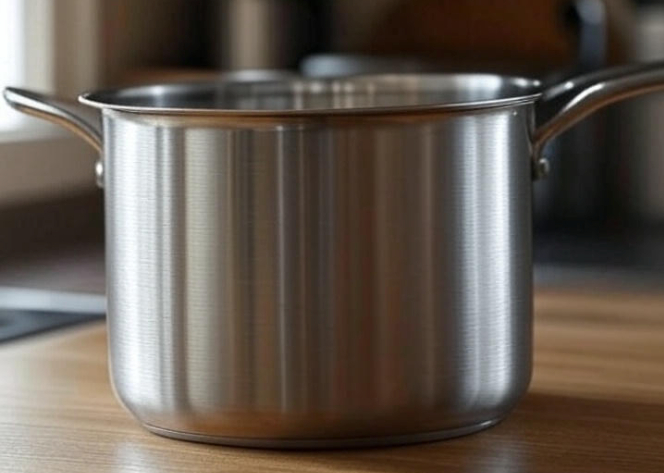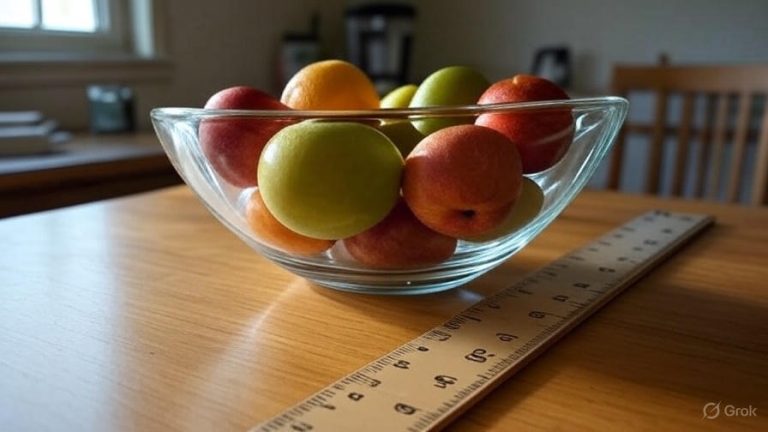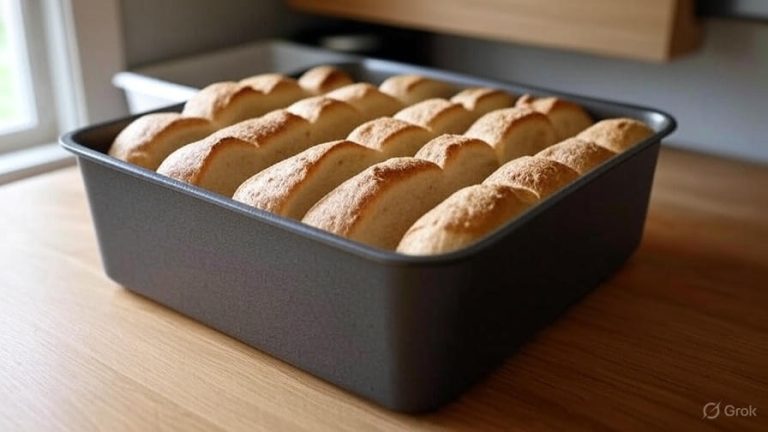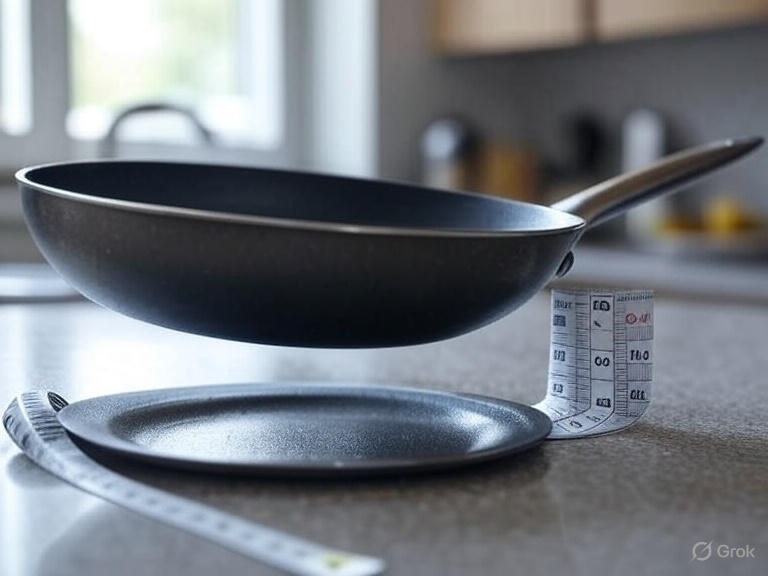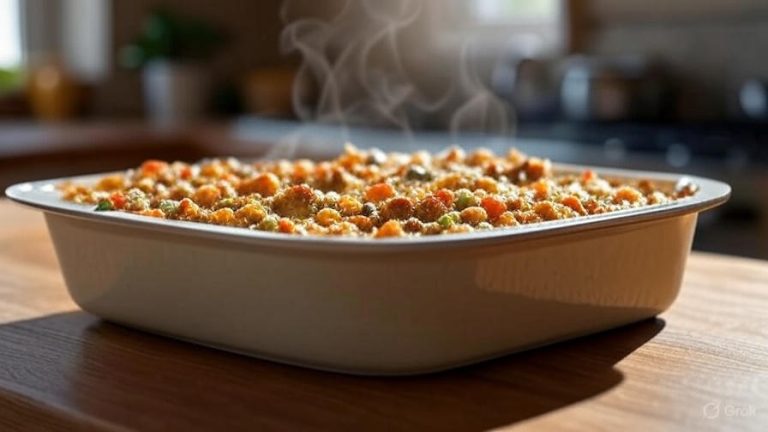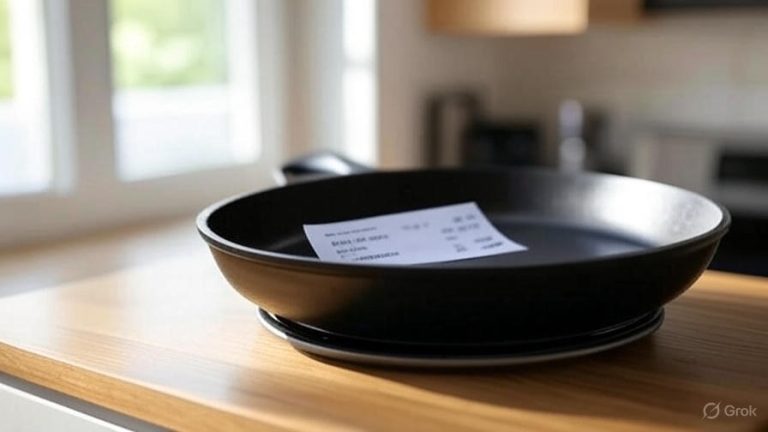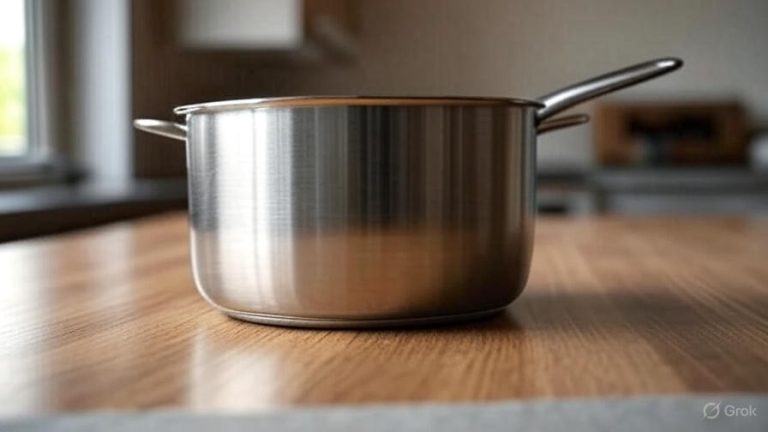How Big Is a 6-Quart Pot?
A 6-quart pot sits perfectly in the middle of most home kitchens – not too small for family meals, yet not so large it overwhelms your stovetop. Many home cooks find themselves wondering about the exact dimensions and capacity of this popular pot size, especially when planning meals or upgrading their cookware collection.
The 6-quart capacity translates to holding 6 quarts of liquid, which equals 24 cups or 1.5 gallons. This measurement refers to the pot’s maximum liquid capacity when filled to the brim. However, practical cooking capacity typically runs about 80% of this maximum, giving you roughly 4.8 quarts of working space for most recipes.
Physical Dimensions of 6-Quart Pots
The actual size of a 6-quart pot varies slightly between manufacturers, but most follow similar proportions. A typical 6-quart pot measures approximately 10 to 11 inches in diameter across the top opening. The height usually ranges from 4.5 to 5.5 inches, depending on whether you’re looking at a wide, shallow design or a taller, narrower version.
Different pot styles affect these measurements significantly. Dutch ovens in the 6-quart size tend to be wider and shorter, often measuring around 10.5 inches across and 4.5 inches tall. Stock pots lean toward taller dimensions, sometimes reaching 6 inches in height with a narrower 9-inch diameter.
The base diameter typically measures smaller than the top opening due to the sloped sides common in most pot designs. Most 6-quart pots have base diameters ranging from 8 to 9 inches, which works well with standard burner sizes on most home stoves.
Real-World Size Comparisons
To help visualize the size, a 6-quart pot compares closely to a large mixing bowl or a small stockpot. Picture a pot that could comfortably hold a whole chicken with room for vegetables around the sides. The capacity also equals about six standard soup cans or three wine bottles worth of liquid.
When placed on your stovetop, a 6-quart pot occupies roughly the same space as a large skillet or two medium saucepans side by side. The pot fits comfortably on most standard burners without hanging over the edges, making it ideal for even heat distribution.
Storage-wise, these pots stack reasonably well in most kitchen cabinets. The height allows them to fit under standard upper cabinets when placed on the counter, though you’ll want to account for the lid height if your pot comes with one.
Cooking Capacity and Serving Sizes
The 6-quart size excels at preparing meals for families of four to six people. You can easily make large batches of soup, stew, or pasta that provide leftovers for busy weeknights. The pot holds enough ingredients to cook 2 to 3 pounds of pasta, making it perfect for dinner parties or meal prep sessions.
For rice preparation, a 6-quart pot can handle up to 4 cups of dry rice, which yields approximately 12 cups of cooked rice – enough to feed a large family or provide several days of meal prep portions. Similarly, you can prepare large batches of grains like quinoa, barley, or bulgur wheat with plenty of room for the grains to expand during cooking.
Soup and stew lovers appreciate the 6-quart capacity for its ability to hold substantial batches. You can easily prepare 12 to 16 servings of soup, depending on the recipe density and ingredients used. This makes the pot invaluable for batch cooking and freezing portions for later use.
Best Uses for 6-Quart Pots
Home cooks reach for their 6-quart pots most often when preparing one-pot meals, braising meats, or cooking large quantities of grains and legumes. The size works exceptionally well for dishes that require browning ingredients first, then adding liquid for braising or stewing.
Pasta cooking becomes much easier with a 6-quart pot, as it provides ample room for water to boil vigorously without overflowing. The wide surface area allows pasta to move freely, preventing sticking and ensuring even cooking. You can comfortably cook up to 1.5 pounds of pasta at once.
Stock and broth making represents another ideal use for this pot size. You can fit a whole chicken carcass or several pounds of beef bones along with vegetables and herbs. The capacity allows for proper dilution while still producing a concentrated, flavorful result.
Canning enthusiasts often choose 6-quart pots for small-batch preserving projects. While not large enough for extensive canning operations, the size works well for making jams, jellies, or pickles for personal use or gift-giving.
Material Considerations and Weight
The material of your 6-quart pot significantly affects its overall weight and cooking performance. Stainless steel versions typically weigh between 4 to 6 pounds empty, making them manageable for most home cooks while providing excellent durability and heat retention.
Cast iron 6-quart pots weigh considerably more, often ranging from 12 to 15 pounds when empty. While heavier to handle, cast iron provides superior heat retention and even cooking, making it ideal for braising and slow-cooking applications.
Aluminum pots offer the lightest option, usually weighing 2 to 4 pounds empty. These heat up quickly and respond rapidly to temperature changes, though they may not retain heat as long as heavier materials.
Non-stick coated 6-quart pots fall somewhere in the middle for weight, typically ranging from 3 to 5 pounds. The coating makes cleanup easier but may limit the types of cooking techniques you can use.
Storage and Kitchen Space Requirements
Before purchasing a 6-quart pot, consider your available storage space carefully. The pot requires approximately 11 inches of cabinet width and 6 inches of height when accounting for the lid. Most standard kitchen cabinets accommodate this size comfortably, but measure your space to be certain.
Counter space becomes a consideration when using the pot actively. You’ll want at least 12 inches of clearance around the pot for safe handling, especially when filled with hot liquids. The pot fits well on most standard stovetops without crowding other burners.
Dishwasher compatibility varies by model, but most 6-quart pots fit in standard dishwashers if you remove or adjust the top rack. Hand washing remains the preferred method for maintaining the pot’s finish and extending its lifespan.
Comparing 6-Quart to Other Common Sizes
A 6-quart pot bridges the gap between smaller 3-4 quart saucepans and larger 8-10 quart stockpots. Compared to a 4-quart pot, the 6-quart version provides 50% more capacity while taking up only slightly more stovetop and storage space.
The jump from 6-quart to 8-quart represents a more significant size increase, with 8-quart pots typically measuring 12-13 inches in diameter and requiring more storage space. Many home cooks find the 6-quart size hits the sweet spot for versatility without overwhelming smaller kitchens.
Smaller 3-quart pots work well for side dishes and small batches, but lack the capacity for family-sized meals. Larger 10-quart or 12-quart pots excel for entertaining or batch cooking but can be unwieldy for everyday use.
Heat Distribution and Cooking Performance
The 6-quart size promotes even heat distribution across most stovetop burners. The pot’s base diameter matches well with standard burner sizes, ensuring efficient heat transfer and reducing hot spots that can cause uneven cooking or scorching.
When filled to practical capacity (about 80% full), the liquid depth in a 6-quart pot typically ranges from 3 to 4 inches. This depth allows for proper simmering and braising while maintaining good heat circulation throughout the contents.
The surface area to depth ratio in 6-quart pots facilitates excellent evaporation control. You can easily adjust cooking liquid levels by leaving the lid off for reduction or covering tightly to retain moisture.
Budget and Value Considerations
Six-quart pots represent an excellent value in most cookware lines, offering substantial capacity without the premium pricing often associated with larger sizes. Entry-level stainless steel options start around $30-50, while high-end versions can reach $200 or more.
The size provides excellent cost per serving when preparing large batches of food. You can make enough soup or stew for multiple meals, reducing both preparation time and ingredient costs per serving.
Investment in a quality 6-quart pot pays dividends over time through its versatility and durability. A well-made pot can last decades with proper care, making it one of the most cost-effective pieces in your cookware collection.
Maintenance and Longevity
Proper care extends the life of your 6-quart pot significantly. Hand washing with warm, soapy water and thorough drying prevents water spots and maintains the pot’s appearance. Avoid using abrasive cleaners or steel wool that can scratch the surface.
Heat management plays a crucial role in maintaining your pot’s integrity. Gradual temperature changes prevent warping, especially important with thinner materials like aluminum. Always allow the pot to cool before adding cold water or placing it in cold water for cleaning.
Seasoning cast iron 6-quart pots regularly maintains their non-stick properties and prevents rust. Stainless steel versions benefit from occasional polishing to maintain their shine and prevent discoloration.
Final Thoughts on 6-Quart Pot Sizing
The 6-quart pot size offers the perfect balance of capacity and practicality for most home kitchens. Its dimensions make it suitable for everything from weeknight dinners to weekend batch cooking projects. The size accommodates family meals while remaining manageable enough for daily use.
When shopping for a 6-quart pot, focus on quality construction and materials that match your cooking style. A well-chosen 6-quart pot becomes an indispensable tool that you’ll reach for time and again, making it a worthwhile investment in your culinary adventures.
The versatility and capacity of a 6-quart pot make it an essential addition to any well-equipped kitchen, providing the perfect size for countless cooking applications while fitting comfortably in most home kitchens.

